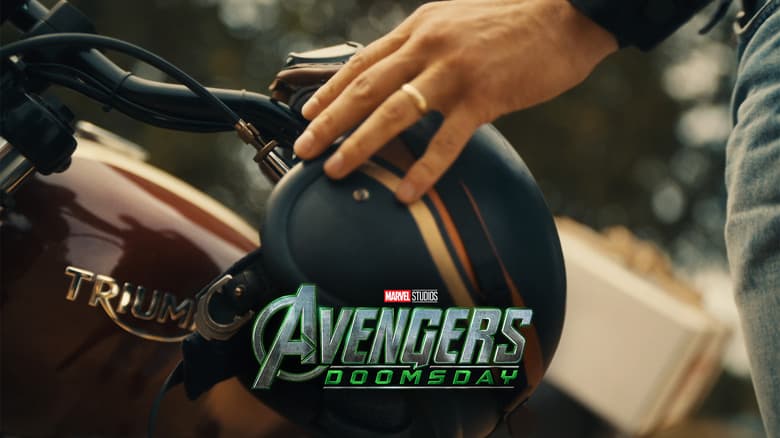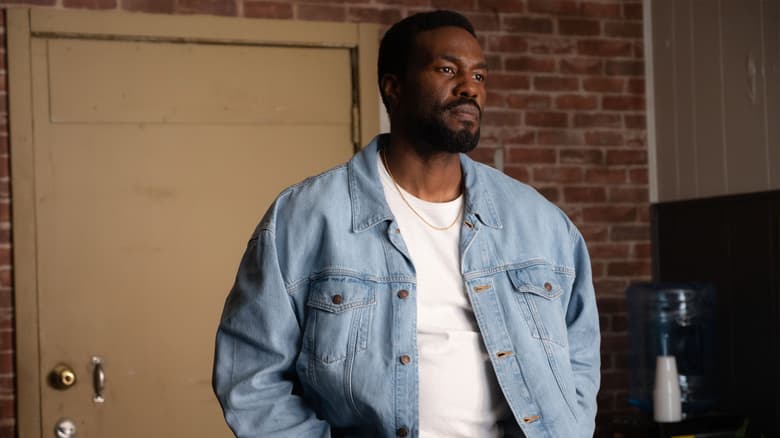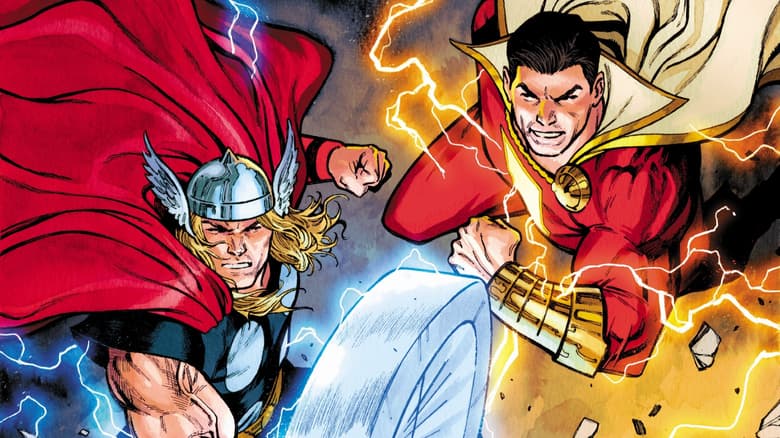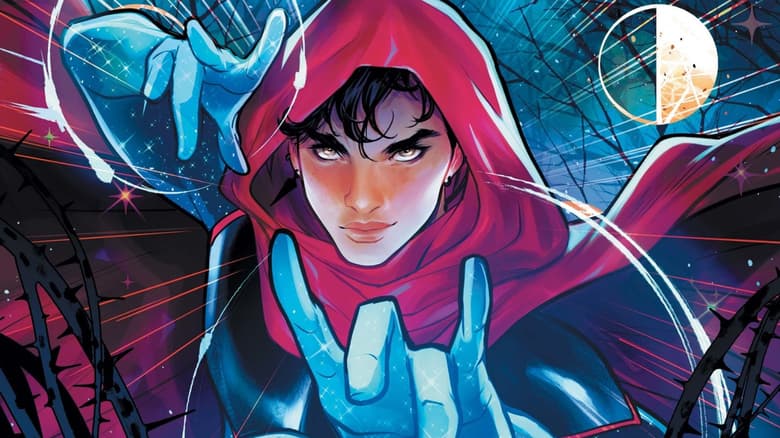Journey Back to Punisher’s Vietnam Days with the Platoon
Garth Ennis & Goran Parlov reunite for a new look at Frank's early days!

Get ready to paint it black with Garth Ennis and Goran Parlov’s long-awaited PUNISHER: THE PLATOON limited series, which will take us back to a pre-Punisher era this October. PLATOON takes place during the Vietnam War in the late 1960s when Frank Castle was just an innocent doe-eyed soldier…though he was never that innocent according to Ennis and Parlov, the duo behind PUNISHER MAX who are writing the story and drawing the art, respectively.
Speaking of, you could not find two more passionate guys for the job; they’re committed to accurately nailing the time period while also delivering an epic and detailed story filled with colorful characters. So, does Mr. Castle love the smell of napalm in the morning? What ‘Nam-related movies did the duo watch before tackling this project? Queue up some CCR and read our in-depth interview with Garth Ennis and Goran Parlov as they prepare us for a run in the jungle…
Marvel.com: So, guys, the hype for this comic series goes back to 2015 at least. What’s it like to finally see it come to fruition?
Garth Ennis: All the pages are in and no one got killed or tortured. So that’s not bad.
Goran Parlov: I just cannot wait to see it out. [I’m] thrilled people can finally read it soon. So much sweat over those pages, so many all-nighters…Yeah, I can’t be happier than I am now.
Marvel.com: You two have worked on Punisher books before. What do you each admire in one another when it comes to bringing Frank Castle to the page?
Garth Ennis: For me Goran is pretty close to being the definitive Punisher artist. He captures Frank’s essential character in his body language: The easy grace, the repressed violence, the lack of drama. The sense of a man just getting on with the job.
Goran Parlov: You can’t say that something or someone is perfect. It is more like a utopic value. But Garth, as a writer, is very close to it. He understands the storytelling, he knows what works in a comic sequence and what doesn’t, what is important and what is superfluous. He can explain himself perfectly with just [a] few words. The scripts are never over explanatory. There are no page-long explanations for a single panel. Short and concise, but everything is there in just [a] few lines. I like to think I can connect very easily with his scripts. [The] stories themselves are always top notch–sometimes funny, sometimes a pure horror, but never boring, and always involving. Matter of fact, I often find myself laughing while drawing, and I can’t help it. Which is good. Means that the thing works. If I am the first to laugh then everybody else will also. On the other side, there were some sequences that I really wanted somebody else [to draw] for me. Talk about “real horror” sequences. With Garth you always get the whole package, and I am addicted to it, to the point that I have problems with other writers. Because I am always looking for Garth in the scripts. Which brings me to a conclusion and to the very essence of your question: Working with Garth for me is very easy.
Marvel.com: This series will focus on Frank’s time in Vietnam, and I can already hear “Fortunate Son” playing in the background. How are you guys capturing the feel of that era as well as the utter grittiness and destruction of this war?
Garth Ennis: The story is set during the Tet offensive of 1968, with Frank’s first battlefield command–an understrength platoon of US Marines–involved in the defense of Khe Sanh, the famous Marine base which was subjected to quite an arduous siege by the North Vietnamese Army. This is a look at the war from the point of view of the average grunt, who finds himself at the center of a maelstrom of unimaginable destruction. The U.S. expended vast reserves of firepower to hold the base, but somehow the matter is still decided in close combat, often hand-to-hand, with the Marines risking life and sanity to survive. At the same time, we’ll see Colonel Letrong Giap–from FURY: MY WAR GONE BY–whose NVA unit is one of those charged with taking Khe Sanh, as he struggles to carry out the often impossible orders he’s been given by the regime in Hanoi. With him is one Ly Quang, a young Viet Cong fighter with an agenda all her own after she comes off worse in an early encounter with Frank.
Goran Parlov: Well, this might sound strange, but I didn’t prepare myself by watching all those famous Vietnam movies. I just remembered them–I watched them while working on FURY: MY WAR GONE BY and previous Punisher books. I wanted to capture the sensation as I remembered it. Of course I had several screenshots and photos from the internet, but those were mostly for weapons, uniforms, machinery. I love to be pretty accurate about those. But the overall feel was completely from within my head.
Marvel.com: In addition, were you influenced by any Vietnam War-related movies, comics, or other similar pieces of pop culture when putting this together?
Garth Ennis: My go-to reading on Vietnam would be “Nam” by Mark Baker, “If I Die in a Combat Zone” and “The Things They Carried” by Tim O’Brien, “A Bright Shining Lie” by Neil Sheehan, “A Rumor of War” by Philip Caputo, and “Rolling Thunder in a Gentle Land” edited by Andrew Wiest. The conflict hasn’t been particularly well served by comics; the only two that come to mind are Marvel’s THE NAM–the first couple of years’ worth–and Fighting Man by Alan Hebden and Cam Kennedy, which I recently managed to get reprinted in the Battle Classics series. For movies, I like “Apocalypse Now,” as much for the lunacy of it as anything else, and a curious little flick called “84 Charlie MoPic.” My favorite Vietnam War film is still “Full Metal Jacket,” partly because it’s so good, partly because I believe a peculiar war deserves a peculiar movie.
Goran Parlov: I was at the middle of the book, three or four episodes behind me, when I decided to watch Oliver Stone’s “Platoon.” It completely confused me. I was all like, “Oh my god, this thing is made this way and not like I did it. That other thing is also different.’ I found a billion things that are not like in my pages…and that blocked me completely. [I was] totally confused. Should I re-draw all those things? Should I start all over from the beginning? Then I talked shortly with Garth about that. He didn’t understand what exactly I thought I did wrong. Well, his question put me back at ease, but deep inside I still felt a bit frustrated. Fortunately, the scenery changed completely in the next few issues and I was able to put all the things that I’ve seen and loved in “Platoon.” My frustration disappeared and no harm has been done to the previous pages. Actually, later on I was very happy with how the things merged together with positive results.
Marvel.com: In your own words, how would you describe this Frank Castle compared the one we know in pop culture? Put another way, will readers be surprised at this facet of Frank?
Garth Ennis: As I say, this is Frank’s first combat command, and in fact his first time in battle. Not even 20, he’s been entrusted with the lives of two dozen young Marines whose abiding motivating factor is the desire to survive their tours of duty, go home, and never look back. He’s been plunged straight into the unspeakable hell of close quarter combat, and expected not just to survive but to lead- and to win. Now, that may seem like an insurmountable task, but I personally believe that Frank was never really particularly green or raw, never some blushing virgin. I think he hit the ground running–partly because he grew up with a certain degree of street smarts and was therefore possessed of strong survival instincts from the get-go, and partly because of whatever was waiting inside him, something that began to awaken as soon as he arrived in Vietnam. Frank has the enviable ability to watch, learn, and act fast–so even before the bullets started flying he at least had a pretty good idea what not to do.
Goran Parlov: I think there will be no surprises. Speaking about his character features, he is the same Frank Castle as we know in PUNISHER MAX, only younger and in a different environment. But I am sure readers will recognize Frank right away under that helmet.
Marvel.com: Going off that, can you talk a little bit about the psychological trauma he’ll be going through in this series and how it will impact his transformation into Punisher?
Goran Parlov: I could find a word or two about the argument, but I’d prefer to leave this question to Garth.
Garth Ennis: Once Second-Lieutenant Castle begins to reveal himself as a first-class problem-solver, certain figures within the military establishment will start keeping an eye on him, only too keen to exploit his particular skill set. So the events in THE PLATOON will at least start him down the road he’s on. Of course, this is only his first tour of duty, and the events of BORN happen during his third, so he has a long way to go on his journey to Firebase Valley Forge. I’ve hinted at some of the things he got up to on his second tour before, and maybe one day soon I’ll get a chance to go into more detail on them.
Marvel.com: What can you tell us about the supporting characters in this story and the way in which they affect Frank’s journey?
Garth Ennis: There’s the aforementioned LeTrong Giap, who initially has too much of an eye on the big picture to worry about some young American officer. There’s also Ly, who wants to kill our hero with all her heart–and then dig him up and kill him again. [Then] there are the men of his platoon, initially wary of their new commander, but who gradually come to see him as their best and possibly only chance of survival as the war sucks them in deeper and deeper, and the horrors of ‘Nam close in around them. Speaking of BORN, you might say that in some ways THE PLATOON is the opposite of that story. It is, perhaps, a look at what might have been for Frank Castle.
Goran Parlov: Reading the story you can barely tell who the protagonist is and who the supporting characters are. They are all important for the story and all together meritorious for the magic. Back when I put my first sketches down on the paper, I thought of them [as if each] one of them is about to have a spinoff eventually. What I want to say is I always try to fall in love with each character and to love ‘em all the way. To personalize them, to give ‘em specific character…in a few words, to give them life. That is, [in] my opinion, how they eventually become interesting characters to me and ultimately to the readers. That is why I love Garth’s scripts because I can easily fall in love with his characters.
Pick up PUNISHER: THE PLATOON #1 in October!
The Daily Bugle
Can’t-miss news and updates from across the Marvel Universe!










